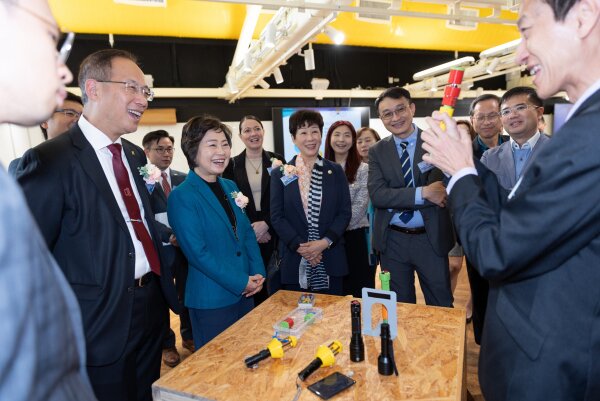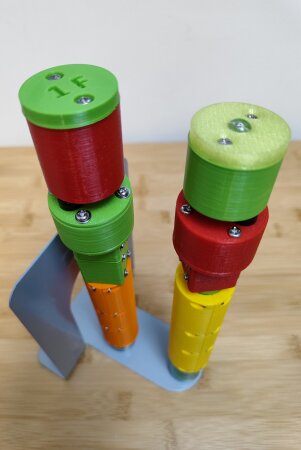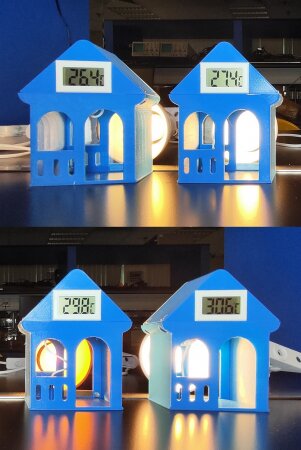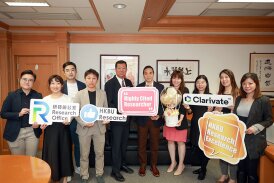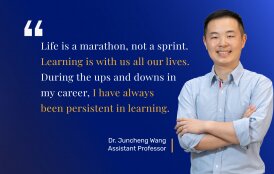
HKBU designs innovation and technology teaching kits for secondary schools to promote STEAM education
The Department of Physics of Hong Kong Baptist University (HKBU) has designed and produced six sets of teaching kits for the innovative technology learning module in collaboration with the Education Bureau (EDB) to support the launch of the “Science (S1-3) STEAM Learning Module” by EDB in the 2023/24 academic year. The kits include teaching materials that can be 3D printed and assembled by the teachers themselves, teaching videos and slides to assist teachers in delivering junior secondary school’s science curriculum and enhance students’ problem-solving and innovation skills.
HKBU, together with the EDB, the Hong Kong Institution of Engineers (HKIE) and the Institution of Engineering and Technology Hong Kong (IET HK), held the launch ceremony of the “Science (S1-3) STEAM Learning Module” on 9 December at HKBU. The guests in attendance included Dr Choi Yuk-lin, Secretary for Education; Professor Alexander Wai, President and Vice-Chancellor of HKBU; Ms Alice Chow, Vice President of HKIE; Ms Toni Allen, Director of International Strategic Marketing and Engagement of IET(HK).
Professor Alexander Wai said: “HKBU is honoured to collaborate with numerous experts in the education and engineering sectors to promote STEAM education and launch the brand new learning module for junior secondary schools. Through the engaging innovation and technology teaching materials, we aim to provide students with firsthand experiences of how innovation and technology can enhance quality of life for the society. The teaching materials will also arouse their interest in learning and cultivate creative thinking, thereby injecting fresh energy into the future development of innovation and technology in both the nation and Hong Kong.”
Dr Choi Yuk-lin, Secretary for Education, said: “The Learning Module emphasises engineering education (the “E” and “M” in “STEAM”), enabling students to understand the fundamental concept of engineering design and enhancing their data management abilities. Through the integration of STEAM knowledge and engineering principles, students engage in creative problem-solving activities. They also gain a better understanding of the practical applications of innovative technology in daily life, promoting the learning of innovation and technology. These learning modules have been piloted in over 15 schools. Teachers have commended the selected content for being innovative, down-to-earth, easy to understand and encouraging active student participation, making learning enjoyable."
In his subsequent keynote speech, Professor Chris Wong, Acting Dean of Science of HKBU, said: “In the past year, the team at the Department of Physics has been diligently working. They have successfully transformed their research achievements into innovative and unique educational kits, with the aim of integrating cutting-edge technological elements into junior secondary school science education. Their goal is to encourage students to step out of the classroom and engage in scientific exploration, enabling them to understand scientific principles through everyday life and experience the practical applications of innovative technologies.”
Other guests from HKBU who attended the event included Professor Zhou Changsong, Head of the PHYS; Professor So Shu-kong, Associate Head of the PHYS; and Dr Chan Mau-hing, Lecturer I of the PHYS and HKBU’s project leader of the “Science (S1-3) STEAM Learning Module”.
On the day of the ceremony, the Department of Physics organised a teaching kits workshop for 20 secondary school teachers. HKBU has collaborated with EDB to promote the module “Innovation and Technology” in the “Science (S1-3) STEAM Learning Module”. In collaboration with EDB, the Department produced six sets of teaching kits for secondary teachers and students, including “Energy Harvesting from Walking”, “Regenerative Braking System in Electric Vehicles”, “Testing the Effectiveness of Sun Control Films”, “Sun Trajectory and Solar Tracking”, “Measuring Pulse Rate with Smart Devices”, and “Recognition of Yoga Poses in Mobile Applications”.
Teachers can browse the learning module website to watch explanatory videos and learn how to use the educational kits. The website also provides various teaching resources, including 3D printing information for each kit. Teachers can download, print, and assemble the materials themselves. HKBU will send representatives to secondary schools to conduct workshops, training teachers how to assemble the materials. The University will also arrange class observation sessions, during which teachers will receive guidance on how to use the teaching kits effectively.
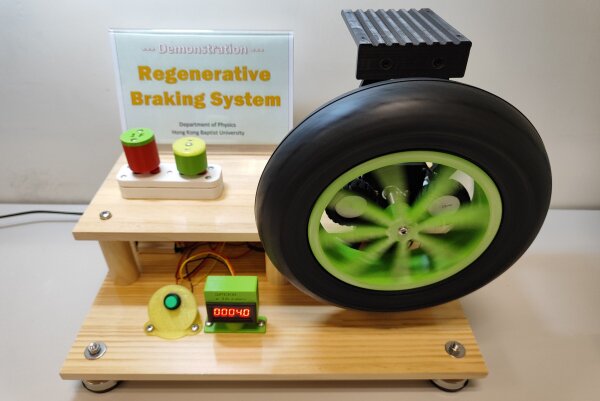
The “Regenerative Braking System in Electric Vehicles” teaching kit: The simulation of the regenerative braking system simulates the real-life scenarios of an electric vehicle starting and braking. It also demonstrates how the regenerative braking system can store or convert kinetic energy into electrical energy.
Previous News
Next News


